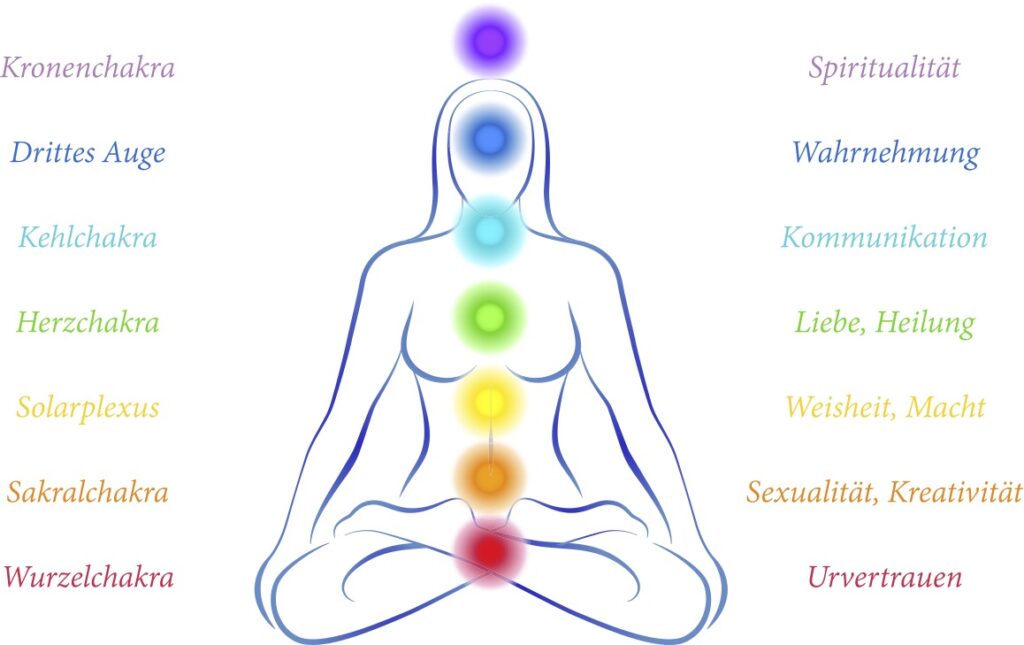
Yoga is a physical discipline from ancient India, where it has been practiced for thousands of years. In the meantime, numerous forms of yoga have also become established in our western latitudes. However, some of the individual forms differ greatly from one another, which can present a yoga novice with major challenges. In addition to the well-known Hatha and Yin Kundalini yoga is also becoming increasingly popular.
This physically and mentally particularly demanding type of yoga is based on a complex philosophy. The goal of Kundalini is to unfold one's own creative power and to experience inner peace through union with universal forces.
But how exactly does it work? That's what we want to find out below.
Kundalini is a very spiritual form of yoga based on the so-called Shiva-Shakti philosophy. Incidentally, this is also where the roots of Tantra, a Hindu and Buddhist current of belief, lie. According to it, the universe consists of two energetic poles in the form of the two gods Shiva and Shakti. The former embodies pure consciousness, the latter the creative force.
According to mythology, the two gods, who were once one, were separated by a vibration. Those who practice Kundalini Yoga want to reunite them. This is achieved by awakening one's own creative power - the Kundalini - with the help of various practices. In yoga teachings, it is assumed that these forces lie dormant in every person and must be specifically activated.
In the symbolic representation, Kundalini is a coiled snake located at the bottom of the human spine. If the awakened Kundalini energy rises up the spine, the earthly soul can unite with the cosmic soul, according to Shiva-Shakti philosophy. In this way, people can benefit from the primal energy and thus develop their full potential.
The awakening of energy plays a central role in the Kundalini teachings. The process could also be described as a kind of transformation: from asleep to awake, from blind to seeing, from clueless child to enlightened one. The first step is to come to terms with yourself:
The more the Kundalini power awakens in you, the less you will be satisfied with simple answers. You come more and more into action and begin to search specifically for your spiritual powers. Energy moves through the seven chakras (energy centers). When the highest chakra is reached, it is called enlightenment.
Not infrequently, Kundalini is described as the creative superpower of numerous historically significant personalities and geniuses. In personal records and notebooks there are often references to energy experiences according to the Kundalini teachings. Often there is talk of a burning or tapping in the lower spine, where the serpent is said to sit.
Albert Einstein, for example, expressed that God-experience had supported him on his personal path.

As mentioned earlier, there are seven chakras. These extend along the spine from the lower back to the head. Fears or other negative emotions can affect the Chakras block, so that the human being can no longer use his very own energy.
In Kundalini, the so-called root chakra, which is located at the lower end of the spine, has a special significance. In this chakra sits not only the sleeping snake, the source of the elemental force, but also our repressed emotions and traumas are anchored there. This explains why the process of waking up can be mentally painful under certain circumstances.
Welcome the pain: It means that your old blockages are dissolving and you now have the chance for inner growth.
Your kundalini can awaken either through the purposeful practice of spiritual practice as well as spontaneously, e.g., through a life-changing Trauma like a near-death experience. However, since the release of energy can be exceedingly powerful, the gentle awakening of the snake is preferable. This way you can get used to the changes in body and mind step by step.
However, even with a gradual release of energy, there may be temporary undesirable side effects. This happens when the energy wants to flow upwards, but the energy channels (chakras) are still blocked in places. This manifests itself, for example, as hot flashes or headaches. In the literature, there is occasionally even talk of psychological crises and schizophrenic symptoms.
But even a controlled Kundalini experience does not go unnoticed. The following sensations may indicate that you are in the process of awakening:
Whether spontaneous enlightenment or slow awakening, the power of Kundalini can be intimidating. No wonder, after all, it is the cosmic elemental force. It resides in every human being, but not everyone can access it. So don't be put off if you've decided to embark on a spiritual journey to your personal powers. Trust the process of change.
There may be moments when you doubt your path or suddenly feel that everything is humbug. Maybe there are skeptics in your environment who don't know what to do with spirituality. It is important that you stay with yourself. If Kundalini is good for you, you should continue to practice it regardless of what others think.
If one or more of the above physical or mental side effects occur, it may be helpful to shift your focus to cool and grounding exercises. Also, make sure you have a healthy eating. Kundalini amplifies your entire sensation - even the fears. Therefore, a positive attitude and inner conviction are even more important.
Now you have already learned a lot about the Kundalini teachings. Now you are probably wondering what the spiritual exercises can look like in concrete terms. Kundalini Yoga consists of a combination of Breathing exercises, Movement sequences and Meditations. Singing and visualizations also play a role.
The breathing exercises (Pranayama) are the beginning of each Kundalini session. Usually begins with the so-called Fire Breath (Kapalabhati) which you may already be familiar with from other forms of yoga. The aim of Fire breath is to promote the release of Kundalini energy and to release your thoughts from the present. Your mind becomes free for new impulses.
Fire Breath is so named because you usually get warm very quickly with this breathing technique: You breathe forcefully through your nose while consciously pulling your belly button toward your spine. The inhalation is short and reflexive.

The individual physical exercises (asanas) require stamina: a single exercise can take up to 15 minutes. It's not bad if you don't succeed right away as a beginner. At first, try to hold the asanas for at least three minutes. Increase from unit to unit. The following exercises are particularly suitable for beginners:
Get into supine position and place your arms beside your body. Inhaling pull your left knee toward your chest. At the same time, extend your right arm above your head. Exhale and bring the limbs back to the start position. With the next inhalation change sides: right knee to chest, left arm above head.
Make sure you have a regular flow of breath. The change of sides should always be in harmony with your breath. Do the exercise for at least three minutes.
Get into prone position, bend your legs and clasp your ankles with your hands. Inhale and lift your chest and thighs off the floor. Try to stay in this position for at least two minutes.
A popular Kundalini mantra is "Satnam". The meaning of the word is as follows:
In the Hindu language, Satnam is translated as the "seven names," which is an allusion to the seven chakras.
To perform the mantra meditation, sit cross-legged. Bring your palms together in front of your chest. This position is called the heart chakra in yoga. Now hum the two syllables "sat" and "nam" in the flow of your breath. The first syllable should be much longer than the second.
Try to maintain this rhythm for at least five minutes. Feel the gentle and deep vibrations of your larynx. Keep your eyes closed. When you come back out of the Meditation When you wake up, you should feel relaxed and grounded. In addition, you can now better focus on the challenges of the (remaining) day.
Kundalini Yoga has only remotely to do with sports and fitness. Rather, it is about practicing a philosophy of life. Here, the most important thing is to observe the Yamas (dealing with the environment) and Niyamas (dealing with yourself). Karma yoga (selfless service to others) and belief in a spiritual force are also essential for true yogis.
Someone who practices Kundalini firmly believes that a tremendous power and strength resides within him, which only needs to be awakened. This belief alone can help to stand more firmly in life and to to be more successful. The mental connection with a spiritual force is also often described as an expansion of limited human consciousness.
There are different strict interpretations of the Kundalini lifestyle. For example, some yogis abstain from alcohol, stimulants and meat so as not to interfere with the divine connection. Of course, this is an individual decision that everyone should make for themselves.
However, there is no question that a healthy and active lifestyle can also improve the mental balance promotes.
Kundalini Yoga is based more on spirituality than on science. Nevertheless, the individual aspects of the philosophy can also be illuminated in a scientific way. Thus, the health-promoting effect of meditation as well as the positive psycho-physiological reaction of yoga (physical and breathing exercises) as proven.
Thus, the following physical reactions could be measured in subjects who regularly practiced Kundalini Yoga:
However, in order to gain the positive effects mentioned above, it depends very much on your inner attitude. If you can't get involved with Kundalini Yoga, you won't be able to benefit from its health-promoting effects. Of course, the same is true for any other style of yoga.
Basically, Kundalini is suitable for anyone who wants to bring a little more peace and consistency into their life and their world of thoughts. Whether you are a yoga beginner or already have some experience, that is secondary for now. The most important thing is that you are ready to engage in a new kind of spiritual experience.
It should be noted, however, that the asanas are sometimes very strenuous. Bouncing, rocking and circular movements are part of Kundalini. Also the breathing exercises are not consistently relaxing, but can demand your strength tremendously. Whether Kundalini Yoga can still be practiced at an older age depends on your personal fitness.
Kundalini Yoga is best suited if you want to rediscover your inner balance and develop more confidence in your own powers. However, since it is a very complex style of yoga and, above all, a spiritual journey Patience asked. Don't give up when the hoped-for inner peace and clarity do not occur within a few weeks. It is, after all, an inner growth process.


